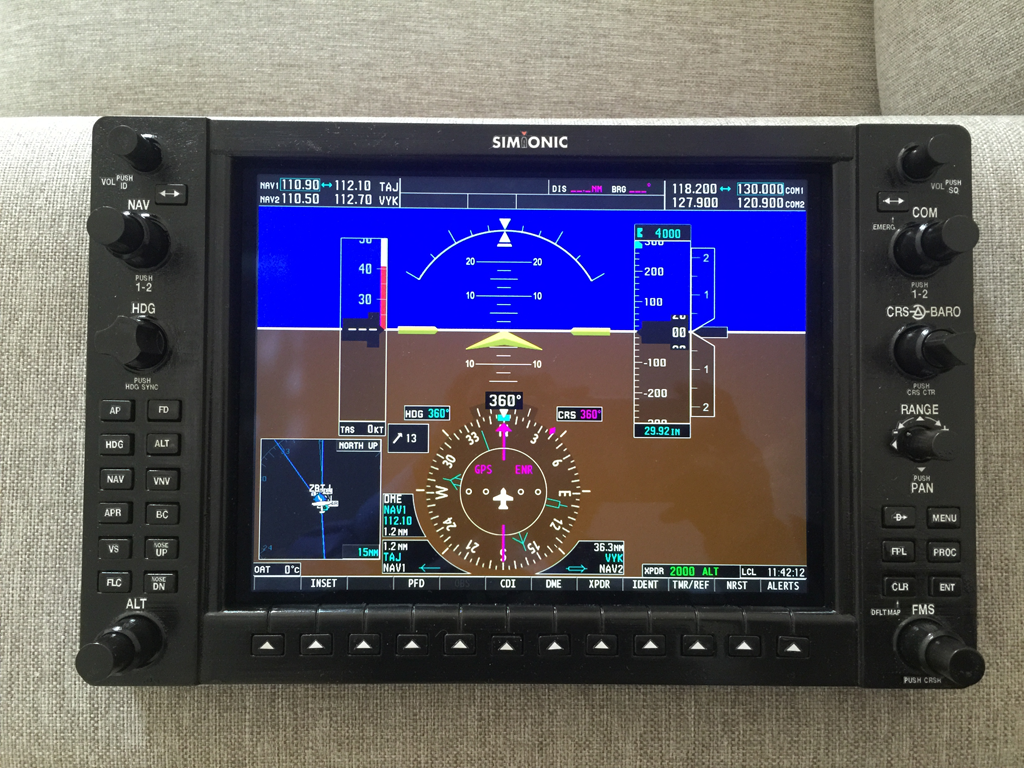

Also you can tap in the upper-right corner to access settings and setup things like your default airport, which will affect which airports you see when you use the NRST function, etc. If you only see the G1000 display itself and not any of the knobs or buttons then you need to tap in the upper left corner to show the bezel. Of course it's tricky to manipulate the knobs using the touch screen, maybe intentionally so that you'll buy the expensive hardware bezel But other than that it works exactly like a real G1000 as far as I can tell.Īlso note that you have to show the bezel on the touch screen to access the knobs and buttons. It works the same way it does on a real G1000, by pushing the FPL button and then using the large and small FMS knobs to enter the waypoints. The newer Cirrus planes with Perspective+ have a newer version of the GCU with some updates, such as moving from an ABCDEF style keyboard and separate numeric keypad to QWERTY keyboard with numbers in a line across the top.
GARMIN G1000 SIMULATOR ONLINE CODE
But those are just the same controls in a slightly different location whereas the alphanumeric keypad is something new that takes getting used to (knowing which button to press to enter a comm frequency versus a nav frequency versus a squawk code for example). Many of the standard MFD controls are also on the GCU (FMS knob, FPL/CLR/Enter buttons, HDG/CRS/Alt knobs, etc.) in a Cirrus, whereas on a regular G1000 the MFD and PFD have the exact same controls. I can enter a frequency on the PFD while still keeping an eye out the window whereas the GCU keypad is in a location where I have to divert more of my attention away from the window to work with it. I think another reason I gravitate to the standard G1000 controls is that they're right in front of me on the PFD. I do use the keypad for entering waypoints since that's way easier than using the FMS knobs. Since I started in a plane that didn't have that, I'm used to using the standard G1000 controls for frequencies and squawk codes. The main difference with Perspective is the Garmin Control Unit (GCU), which gives you the alphanumeric keypad for entering waypoints, radio frequencies, squawk codes, etc. I started in a Cessna 172 with G1000 which is why my setup is very Cessna-like, but it's also much harder to find SR20 style simulator hardware. Many flights I don’t even turn on my iPad & Foreflight while in the air. Once you get past the basics, there’s lots more. While in the air, you concentrate on the flying and will be able to access the myriad of data from the G1000 quickly and directly. If you can find a ground power supply like a Start Pac, practice turning knobs and operate your plane’s G1000 while on the ramp or hangar.
GARMIN G1000 SIMULATOR ONLINE HOW TO
Learn how to turn the knobs and find all this stuff and know where and which page they’re on and be able to go right to it. Learn how to find metars, airport data & ATC frequencies, flight plan input, top of descent, and map and XM weather display operations. The version of my G1000 is the earliest (with the KAP-140 autopilot), so I found an early edition of Trescott’s book on eBay.

The G1000 offers a lot and the knobs and the information they get to is best learned on the ground. A relatively low time VFR pilot learning the utility of the G1000 is all about muscle memory.


 0 kommentar(er)
0 kommentar(er)
